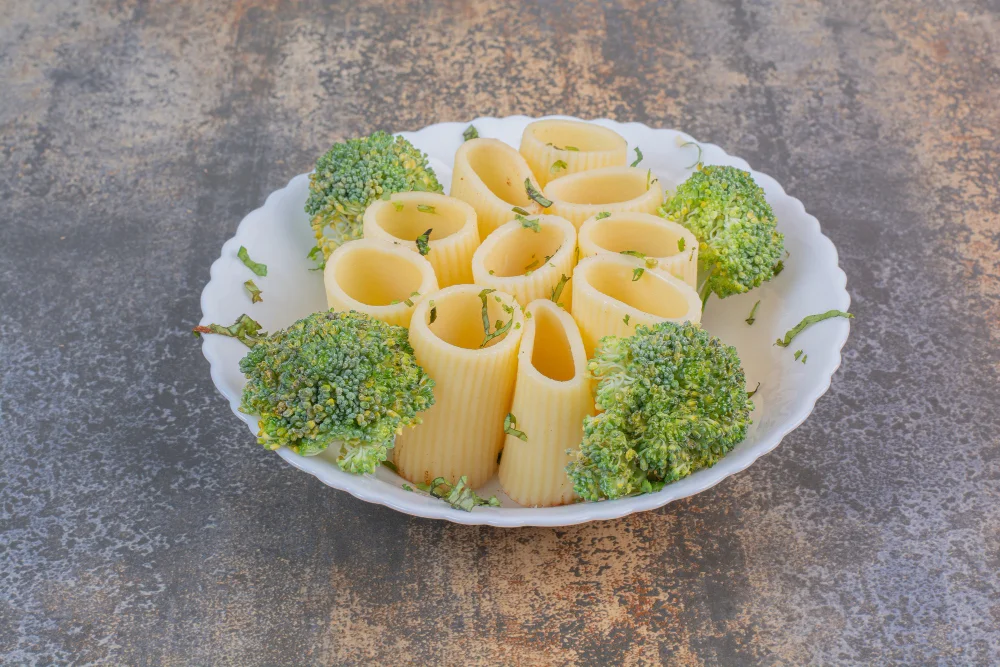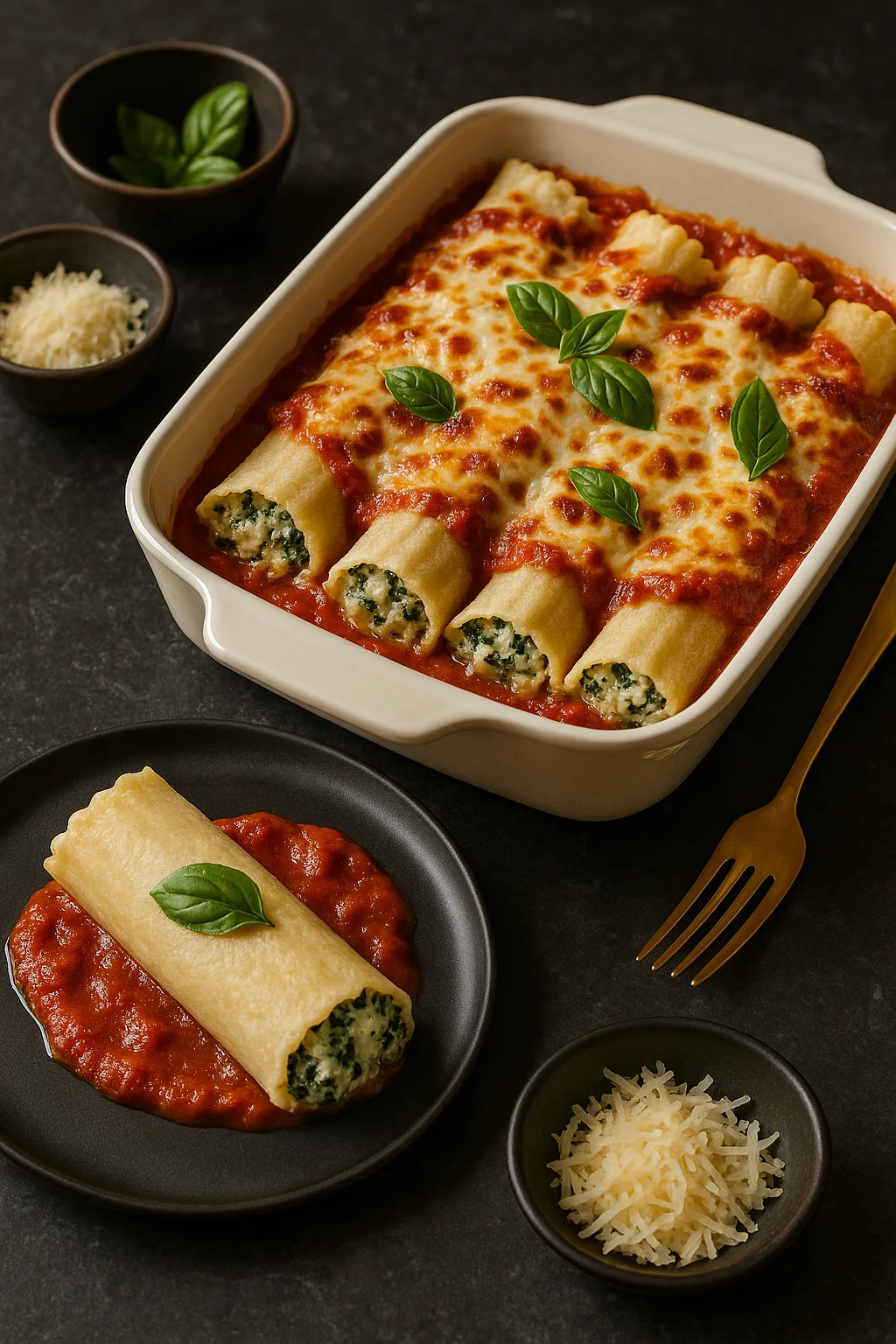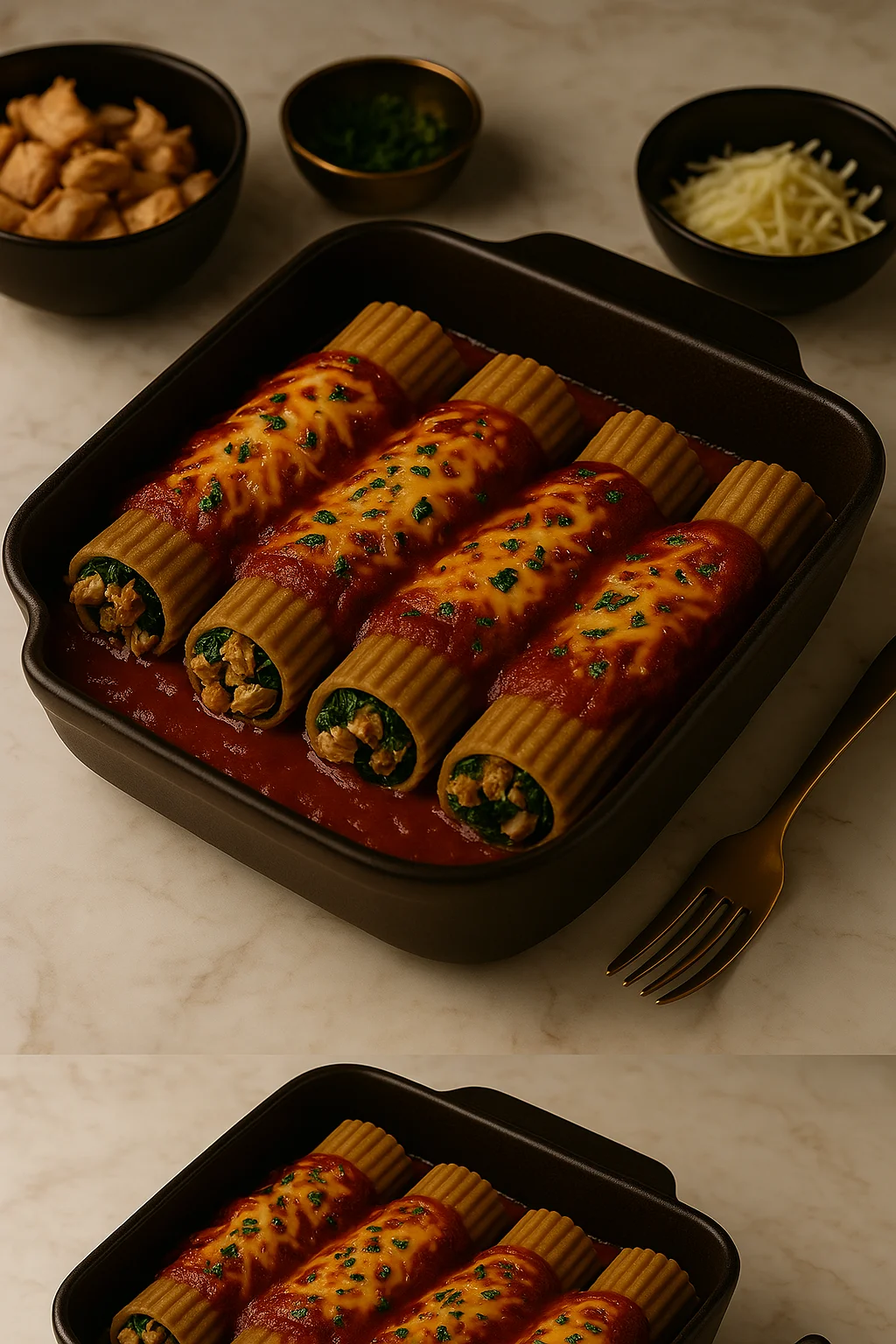Introduction
If you love pasta but struggle with bloating or stomach discomfort after eating cheese-filled dishes, you’re not alone. Fortunately, dairy-free manicotti options for sensitive stomachs allow you to enjoy the flavors of classic Italian cuisine without triggering digestive issues.
Whether you’re lactose intolerant, have IBS, or simply trying to eat more gently on your gut, this guide will walk you through homemade recipes, ingredient swaps, and tips for making manicotti that’s not only safe—but seriously satisfying.
Benefits of Dairy-Free Manicotti Options for Sensitive Stomachs
How It Helps with Digestive Wellness
Traditional manicotti contains ricotta, mozzarella, and often heavy cream—all of which can wreak havoc on sensitive stomachs. By switching to dairy-free manicotti options for sensitive stomachs, you:
- Avoid lactose-induced bloating and cramping
- Reduce inflammatory responses from dairy proteins
- Support gut health with plant-based, nutrient-rich ingredients
- Prevent common reflux triggers like acidic sauces or aged cheeses
Key Advantages for People with Food Sensitivities
Here’s why dairy-free manicotti options for sensitive stomachs are gaining popularity:
- Gentle on the stomach: No casein or whey to irritate your system
- High in fiber and plant protein: Thanks to ingredients like tofu or spinach
- Customizable to suit other allergies: Like gluten-free, nut-free, or soy-free
- Still rich and satisfying: Creamy textures from cashew-based or almond-based ricotta
How to Make Dairy-Free Manicotti at Home
Step-by-Step Recipe Guide
Creating your own dairy-free manicotti options for sensitive stomachs is easier than you think. Here’s a basic recipe:
Ingredients:
- 10 manicotti shells (gluten-free if needed)
- 1½ cups cashew ricotta or tofu ricotta
- 1 cup sautéed spinach or shredded zucchini
- 2 tbsp nutritional yeast
- 1 tsp garlic powder (optional)
- 1½ cups low-acid tomato basil sauce (no sugar added)
Instructions:
- Cook manicotti shells until al dente. Drain and set aside.
- Mix ricotta alternative, veggies, yeast, and spices in a bowl.
- Fill shells gently with the mixture using a piping bag or spoon.
- Spread half the sauce in a baking dish, add filled shells, then top with remaining sauce.
- Cover with foil and bake at 375°F (190°C) for 25 minutes. Let cool before serving.
This recipe is one of the easiest dairy-free manicotti options for sensitive stomachs to prepare ahead or freeze for later meals.
Common Mistakes to Avoid
- Using acidic sauces: Go for low-acid tomatoes to prevent heartburn.
- Not soaking nuts: Soaking cashews makes them easier to digest and blend.
- Forgetting protein: Add lentils, tempeh, or chickpeas to boost nutrition.
- Using store-bought “dairy-free” with casein: Always check labels!
Best Practices for Dairy-Free Manicotti Options for Sensitive Stomachs
Tips & Tricks for Better Results
Whether cooking for yourself or the whole family, these tips will ensure your dairy-free manicotti options for sensitive stomachs taste just right:
- Choose fresh herbs like basil and oregano for flavor without triggering sensitivities.
- Test plant-based cheeses—like cashew or almond ricotta—for your personal tolerance.
- Avoid onions or garlic if you’re on a low-FODMAP diet (optional swaps include green onion tops or garlic-infused oil).
- Freeze leftovers in portions for easy meal planning.
Expert Recommendations
- Nutritionists suggest including prebiotic-rich foods (like artichokes or leeks) for gut support.
- Dietitians recommend low-FODMAP versions of tomato sauce and ricotta if IBS is an issue.
- Add digestive enzymes or probiotics to your routine if you’re transitioning off dairy.
FAQs About Dairy-Free Manicotti Options for Sensitive Stomachs
Is dairy-free manicotti healthy?
Yes. These options are often lower in fat, easier to digest, and made with real, whole foods that nourish the body.
Can I buy premade dairy-free manicotti?
Some health stores offer frozen dairy-free pasta meals. Brands like Daiya and Kite Hill also offer plant-based cheese fillings you can use at home.
What’s a good ricotta substitute?
The best are homemade cashew or tofu ricotta. They mimic texture and flavor without lactose or casein.
Is gluten-free necessary too?
Only if you have gluten sensitivity. However, using gluten-free shells can reduce inflammation for many people with digestive issues.
How often can I eat dairy-free manicotti?
As often as you like—just make sure you’re balancing it with plenty of veggies, water, and fiber throughout the week.
Conclusion
You don’t have to give up your favorite Italian comfort foods just because your stomach is sensitive. With the right ingredients and mindful preparation, dairy-free manicotti options for sensitive stomachs can be just as indulgent and far more gut-friendly.


